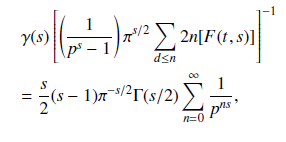Some Numerical Significance of the Riemann Zeta Function
Keywords:
Analytic Continuation, Polynomial, Numerical Estimate, Non-trivial zerosAbstract
In this paper, the Riemann analytic continuation formula (RACF) is derived from Euler’s quadratic equation. A nonlinear function and a polynomial function that were required in the derivation were also obtained. The connections between the roots of Euler’s quadratic equation and the Riemann Zeta function (RZF) are also presented in this paper. The method of partial summation was applied to the series that was obtained from the transformation of Euler’s quadratic equation (EQE). This led to the derivation of the RACF. A general equation for the generation of the zeros of the analytic continuation formula of the Riemann Zeta equation via a polynomial approach was also derived and thus presented in this work. An expression, which was based on a polynomial function and the products of prime numbers, was also obtained. The obtained function thus afforded us an alternative approach to defining the analytic continuation formula of the Riemann Zeta equation (ACFR). With the new representation, the Riemann Zeta function was shown to be a type of function. We were able to show that the solutions of the RACF are connected to some algebraic functions, and these algebraic functions were shown to be connected to the polynomial and the nonlinear functions. The tables and graphs of the numerical values of the polynomial and the nonlinear function were computed for a generating parameter, k, and shown to be some types of the solutions of some algebraic functions. In conclusion, the RZF was redefined as the product of a derived function, R(tn,s), and it was shown to be dependent on the obtained polynomial function.

Published
How to Cite
Issue
Section
Copyright (c) 2023 Opeyemi O. Enoch, Lukman O. Salaudeen

This work is licensed under a Creative Commons Attribution 4.0 International License.




